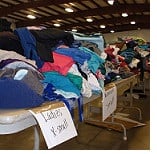 Charities and nonprofits love to receive donations, but many face challenges when they get noncash contributions, or “gifts in kind.” In-kind donations are not as easy to record as cash and issues with fair value typically come into play. Donors may not be able to give in the form of cash but are more than willing to contribute gifts, such as furniture or supplies, or contribute a service. There are numerous types of noncash contributions a nonprofit can receive that require special record keeping. Nonprofits should keep these tips in mind to stay compliant with generally accepted accounting principles.
Charities and nonprofits love to receive donations, but many face challenges when they get noncash contributions, or “gifts in kind.” In-kind donations are not as easy to record as cash and issues with fair value typically come into play. Donors may not be able to give in the form of cash but are more than willing to contribute gifts, such as furniture or supplies, or contribute a service. There are numerous types of noncash contributions a nonprofit can receive that require special record keeping. Nonprofits should keep these tips in mind to stay compliant with generally accepted accounting principles.
- The most challenging aspect of donated goods is determining an appropriate value. While a “quoted price” is preferable, an active market may not exist for many items to find a price. In such case, observable public information on identical or similar assets should be used. Websites such as eBay can be used for general goods or Kelley Blue Book for vehicles. If a value cannot be determined from an active or observable market, the fair value as determined by the donor can be used as a last resort.
- Long-lived assets such as a vehicle or piece of equipment should be recorded at fair value and depreciated over its useful life. You should also be aware of any donor-imposed restrictions on the purpose or timing, as a temporarily restricted contribution may be necessary.
- Nonprofits may receive the use of a building or a discounted price on rent or utilities. In this situation, the value of the benefits received should be measured at fair value at the time of the contribution. If the asset is long-lived, the amount should not exceed the fair value and be amortized over the subsequent years.
- If your organization receives items to be used as inventory for an auction, fair value should be used for the contribution. If the goods are sold for more or less than the recorded value, the difference should be recognized as an adjusting contribution. In cases where fair value cannot be determined, nonprofits can simply wait until they receive proceeds to record a prior inventory value.
- Many nonprofits are run by volunteers. The fair value of contributed services must be recorded in the period received if one of the following conditions are met:
- The services creates or enhances nonfinancial assets, such as a building.
- The service requires specialized skills, such as construction or accounting services, is provided by individuals possessing those skills, and would ordinarily need to be purchased if it had not been donated.
- Contributed goods and services should be disclosed in the financial statements. The notes typically identify the nature of goods or services received, the fair value amount recognized as contributions, and how the gifts were used.
All nonprofits should have procedures in place for receiving various types of gifts. Each type of gift is accounted for differently and it is important to avoid the common mistakes. Large or unique donations should also always be evaluated before being accepted. If a gift is more harmful than helpful, or doesn’t support the nonprofit’s mission, it may be better to decline this gift. These are all things to consider ahead of time.
